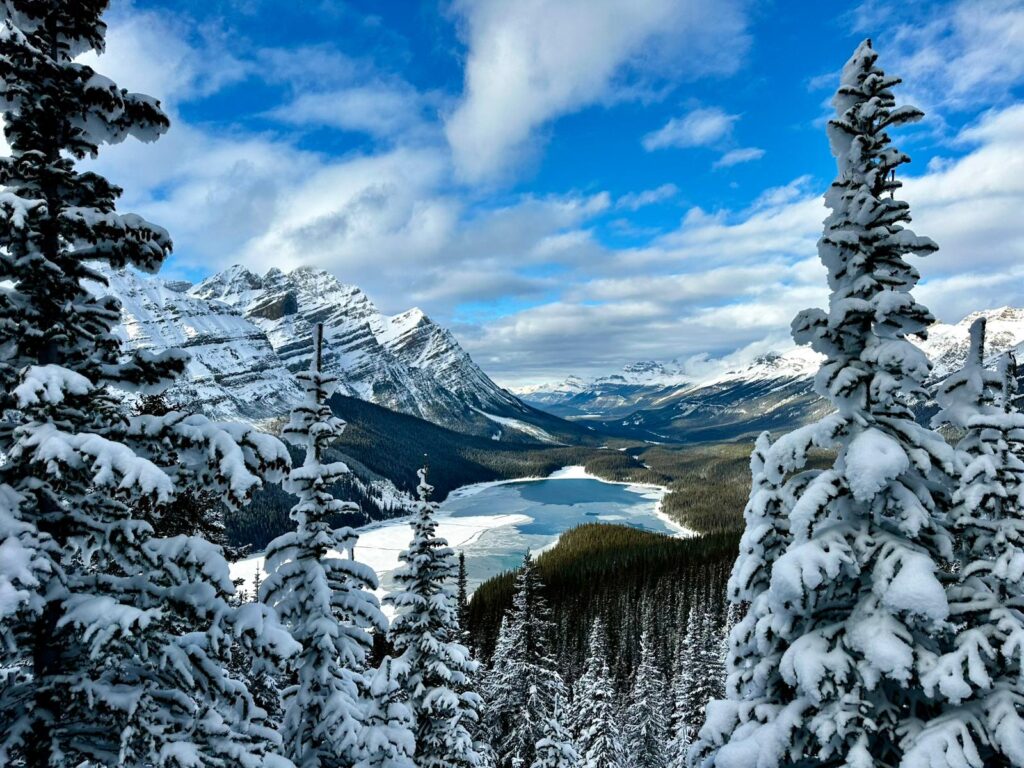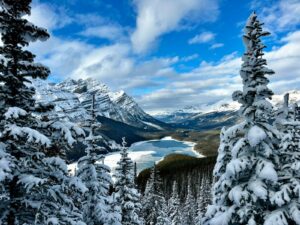Why Sustainable Travel in Banff Matters More Than Ever

When we talk about sustainable travel in Banff, we’re talking about more than just enjoying breathtaking mountain views. We’re talking about preserving these landscapes so future generations can experience the same wonder we feel today. As travelers, we share the responsibility of protecting Banff’s unique ecosystem, its glacier-fed lakes, alpine meadows, and wildlife.
Sustainability in Banff isn’t about giving up comfort or adventure, it’s about making choices that balance our enjoyment with environmental care. By supporting local businesses, reducing waste, and respecting wildlife, we can ensure our trips leave a positive impact on this incredible destination.
Eco-Friendly Transportation for Your Banff Adventure
Transportation plays a major role in sustainable tourism. Instead of relying solely on private cars, we can choose eco-conscious options like shuttle services, cycling, or even walking trails where possible.
Shuttle services not only reduce carbon emissions but also help ease traffic congestion in popular spots like Lake Louise and Moraine Lake. This means fewer vehicles crowding the roads, less pollution, and a better overall experience for everyone exploring the park.
If you’re cycling, you’ll find Banff has scenic routes that offer intimate views of nature you might miss from a car window. These slower, immersive modes of travel make your journey as rewarding as your destination.
Choosing Accommodations That Support Sustainability
Where we stay matters. Many hotels, lodges, and cabins in Banff are taking steps toward eco-friendly operations, think solar energy, water-saving systems, and locally sourced products. By choosing these accommodations, we’re directly supporting businesses that prioritize environmental care.
Some lodges also partner with conservation groups, meaning part of your stay contributes to preserving Banff’s pristine wilderness. Look for Green Key or LEED-certified properties as a sign of genuine commitment to sustainability.
Low-Impact Activities to Enjoy in Banff
Banff offers countless activities that align with sustainable travel. Hiking, canoeing, birdwatching, and snowshoeing are perfect examples of low-impact ways to explore. These activities allow us to connect with nature without leaving a heavy footprint.
For example, the Sunshine Meadows hike offers incredible wildflower views during summer, while cross-country skiing in winter lets us glide through serene snow-covered landscapes without disrupting wildlife.
When participating in these activities, sticking to marked trails and following “leave no trace” principles ensures we’re not unintentionally damaging delicate habitats.
Supporting Local Communities and Businesses

One of the most fulfilling parts of sustainable travel in Banff is supporting the local economy. Whether it’s dining at a locally owned café, buying handmade crafts, or booking guided tours run by Banff residents, every dollar spent locally helps the community thrive.
This also enriches our travel experience, local guides often share fascinating insights and hidden gems that aren’t in standard tourist brochures. Their stories and traditions connect us to Banff on a deeper, more personal level.
Seasonal Considerations for Sustainable Travel
Banff experiences heavy visitor traffic during summer and winter peak seasons. Traveling during spring or fall, also known as shoulder seasons, can significantly reduce the environmental strain.
In spring, we can witness the melting ice and early wildflower blooms with fewer crowds. In autumn, golden larch trees and crisp mountain air create a peaceful atmosphere, allowing nature to recover between high seasons.
By adjusting our travel times, we not only enjoy quieter landscapes but also help balance the region’s tourism load, which supports long-term sustainability.
Reducing Waste While Traveling
One of the simplest yet most impactful actions we can take is reducing waste. Bringing reusable water bottles, coffee cups, and shopping bags means fewer single-use plastics end up in Banff’s landfills or natural areas.
When packing snacks or lunches for day trips, using reusable containers keeps trash to a minimum. Even small steps like properly disposing of organic waste or recycling whenever possible contribute to the park’s health.
Remember: wildlife safety is also at stake, animals drawn to improperly discarded food waste can become dependent on humans, which threatens their survival.
Wildlife Etiquette: Seeing Animals the Right Way

Banff is home to elk, deer, bears, and countless bird species. Seeing them is magical, but we must always keep a safe distance. Approaching wildlife too closely or feeding them can cause stress and disrupt natural behaviors.
Using binoculars or zoom lenses allows us to admire these creatures without intrusion. This way, our photos capture beauty without compromising safety, for both animals and ourselves.
How We Can Make Sustainable Travel in Banff a Shared Commitment
As a team passionate about eco-conscious exploration, we believe sustainable travel in Banff is a journey we take together. Every choice, whether it’s riding a shuttle instead of driving, booking eco-certified accommodations, or simply refilling a reusable water bottle, adds up to lasting positive change.
Our collective actions help keep Banff’s crystal-clear lakes, towering peaks, and vibrant wildlife thriving for decades to come. If you’re ready to plan your own sustainable adventure and make your trip both memorable and responsible, you can explore more about convenient, eco-friendly travel options with Ten Peaks Shuttle.



